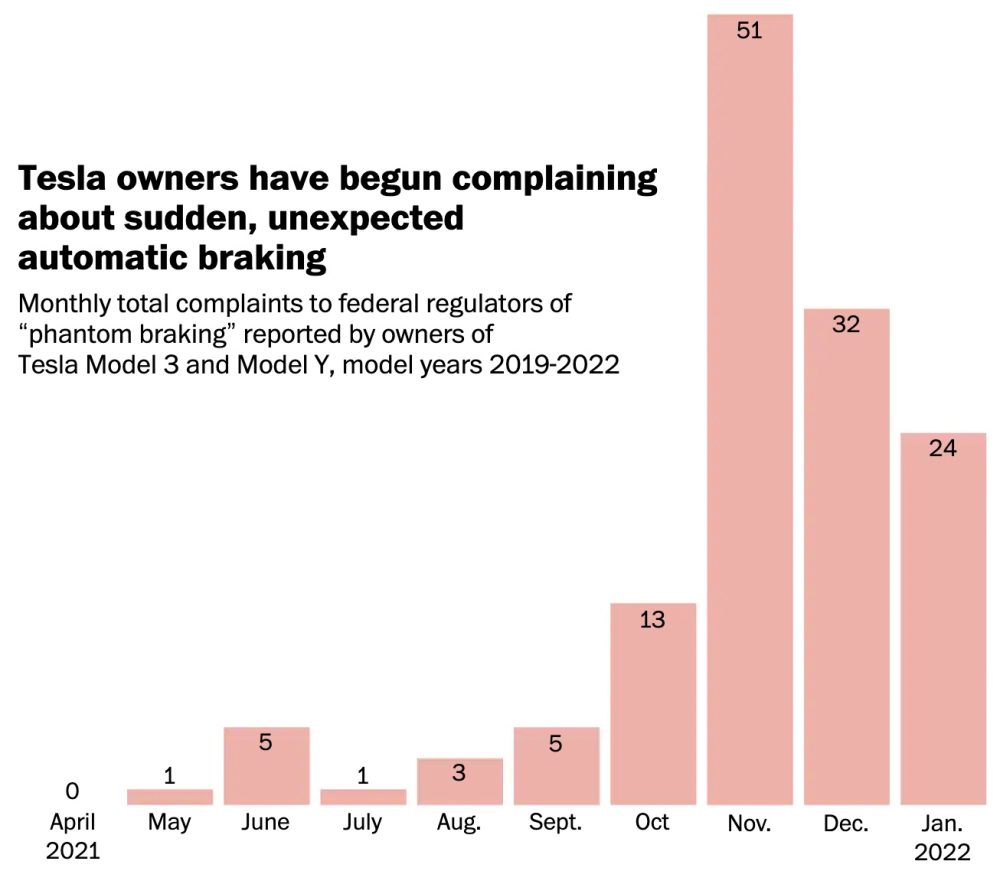
The National Highway Traffic Safety Administration (NHTSA) confirmed that it opened an investigation into Tesla’s ‘phantom braking’ problem under Autopilot.
It’s an issue that owners have complained about for almost a year.
Back in November, Electrek released a report called ‘Tesla has a serious phantom braking problem in Autopilot.‘
It highlighted a significant increase in Tesla owners reporting dangerous phantom braking events on Autopilot.
Phantom braking is a term used to describe when an advanced driver assistance system (ADAS) or a self-driving system applies the brakes for no good reason.
The system can be falsely detecting an object on the road or anticipating a collision that won’t actually happen and apply the brake to try to avoid it.
Obviously, phantom braking is something you want to avoid since it can create accidents if someone is following too closely behind you.
This issue is not new in Tesla’s Autopilot, but our report focused on Tesla drivers noticing an obvious increase in instances based on anecdotal evidence, but it was also backed by a clear increase in complaints to the NHTSA.
Our report made the rounds in a few other outlets, but it didn’t really go mainstream until now.
However, the Washington Post ended up picking the story up with a very similar report earlier this month that was more widely distributed.

At the time, NHTSA commented on the report saying that they were looking into the issue and talking to Tesla about it.
Today, NHTSA’s Office of Defects Investigation (ODI) confirmed that it opened an investigation into the matter.
NHTSA wrote in the investigation notice:
“The Office of Defects Investigation (ODI) has received 354 complaints alleging unexpected brake activation in 2021-2022 Tesla Model 3 and Model Y vehicles. Received over the past nine months, the reports have often been characterized as “phantom braking” by consumers. Tesla describes the subject vehicles as equipped with a suite of advanced driver assistance system (ADAS) features referred to as Autopilot which Tesla states will allow the vehicle to brake and steer automatically within its lanes.
The complaints allege that while utilizing the ADAS features including adaptive cruise control, the vehicle unexpectedly applies its brakes while driving at highway speeds. Complainants report that the rapid deceleration can occur without warning, at random, and often repeatedly in a single drive cycle.”
Interestingly, the agency says that the investigation focuses on 2021-2022 Model 3 and Model Y vehicles.
However, owners of older Model 3 and Model Y vehicles have also been reporting an increased number of phantom braking events, especially after the software update to vision-only Autopilot in May 2021.
Here’s the notice in full:
[scribd id=559522298 key=key-Zor9NqN15lM7WA7xEFkx mode=scroll]
FTC: We use income earning auto affiliate links. More.






Comments